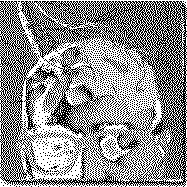Tuesday, September 15, 2009
こころ 下 十
「金に不自由のない私(わたくし)は、騒々(そうぞう)しい下宿を出て、新しく一戸を構えてみようかという気になったのです。。。
Sensei, though cheated of most of his inheritance, is nontheless not impoverished. In this section he describes how he seeks to move out of his student boarding house and find something quieter. He visits the Hongodai, an area west of Uenokoen. A candy shop proprietor directes him to a widow who is looking for a boarder.
The sentence with which the proprietoress describes the widows situation is long, winding, and almost runs out of wind at the end ... it feels natural even today:
The setting of the scene is sometime just after the First Sino-Japanese War - 日清(にっしん)戦争 - (1894 - 1895).
Place names include
Sensei, though cheated of most of his inheritance, is nontheless not impoverished. In this section he describes how he seeks to move out of his student boarding house and find something quieter. He visits the Hongodai, an area west of Uenokoen. A candy shop proprietor directes him to a widow who is looking for a boarder.
The sentence with which the proprietoress describes the widows situation is long, winding, and almost runs out of wind at the end ... it feels natural even today:
一年ばかり前までは、市ヶ谷(いちがや)の士官(しかん)学校の傍(そば)とかに住んでいたのだが、厩(うまや)などがあって、邸(やしき)が広過ぎ るので、そこを売り払って、ここへ引っ越して来たけれども、無人(ぶにん)で淋(さむ)しくって困るから相当の人があったら世話をしてくれと頼まれていた のだそうですSensei's description of the conversation he has with the widow has much the same spirit. This section also ends with a omnious question : why does such a lively widow feel so alone?
The setting of the scene is sometime just after the First Sino-Japanese War - 日清(にっしん)戦争 - (1894 - 1895).
Place names include
本郷台 (ほうごうだい)
小石川 (こいしかわ)
伝通院 (でんずういん)
Monday, September 14, 2009
こころ 下 九
「一口(ひとくち)でいうと、叔父は私(わたくし)の財産を胡魔化(ごまか)したのです。。。
Sensei wraps up his discussion of how his uncle cheated him of most of his inheritance. The section finishes with Sensei regretting that when he leaves his hometown, he will never have the opportunity to visit the grave sites of his parents. This observation is especially poignant as we realize we, as well as the narrator, are reading his last will and testament.
Sensei wraps up his discussion of how his uncle cheated him of most of his inheritance. The section finishes with Sensei regretting that when he leaves his hometown, he will never have the opportunity to visit the grave sites of his parents. This observation is especially poignant as we realize we, as well as the narrator, are reading his last will and testament.
私は国を立つ前に、また父と母の墓へ参りました。私はそれぎりその墓を見た事がありません。もう永久に見る機会も来ないでしょう。
Wednesday, September 09, 2009
2009年09月: こころ
House of Ogai Mori and Soseki Natsume
Sendagi Bunkyo-ku Tokyo,built in 1887

Image and text from the Meji Mura, http://www.meijimura.com/english/shisetsu/s009.html .
This semester I'm continuing my reading of Kokoro (the Aozora Bunko digital version) and am now in the third part - Sensei and his Testament. Just to get the setting straight, here's some dates. Natsume Soseki himself, lived from 1867 until 1916. The Meiji Emperor, who's death occurs in the second part of the novel, ruled from 1867 until 1912. Kokoro itself was written two yeas later in 1914.
